The team trying to cut down on ambulance call-outs
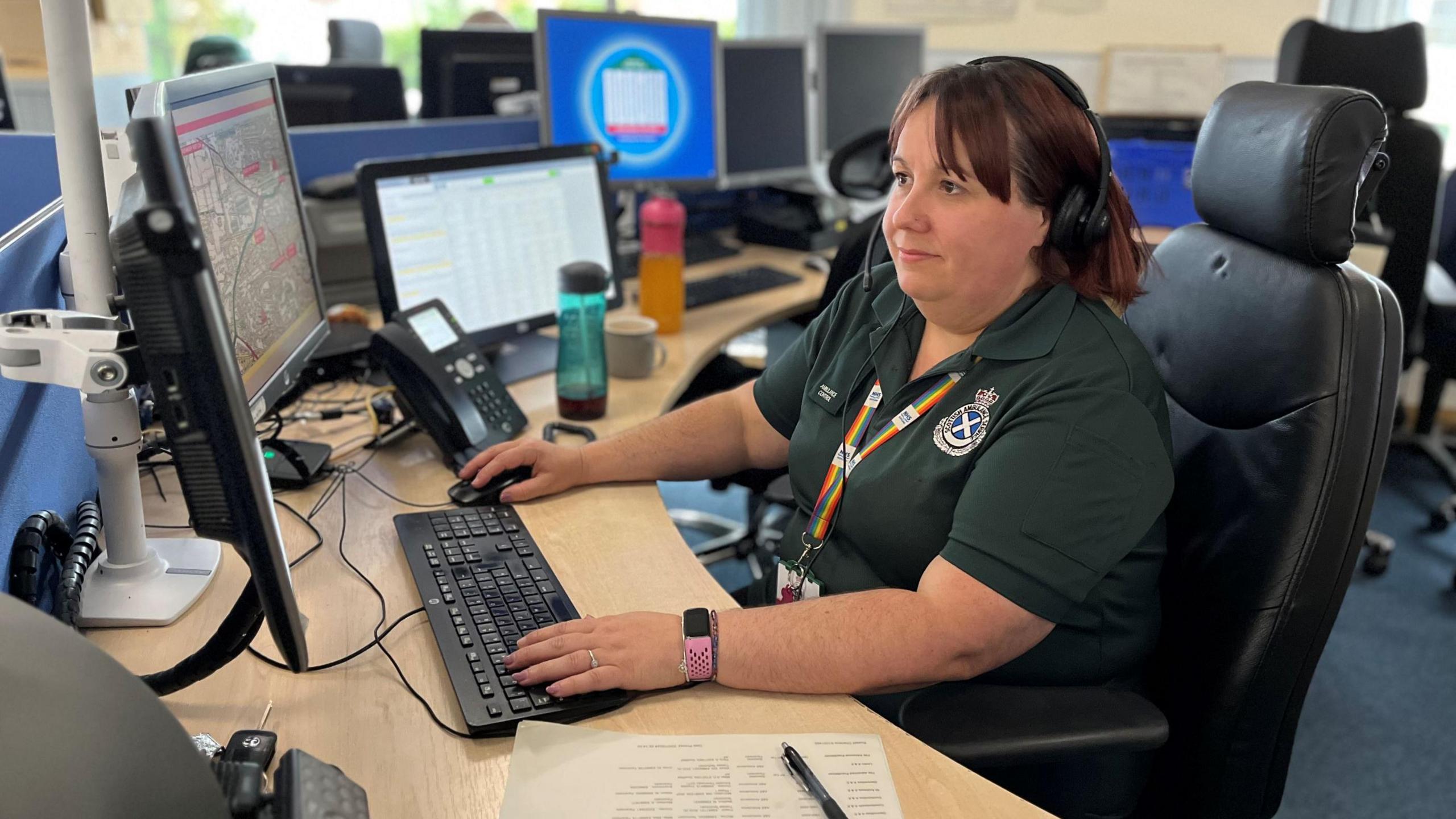
Tabbitha Haston says the number of calls for ambulance has grown massively
- Published
It is just 10:00 on a weekday morning in July and ambulances are "stacking" outside hospitals across the east of Scotland, dispatcher Tabbitha Haston tells me.
Already, half of Aberdeen’s available ambulances are stuck outside the A&E at the city’s Royal Infirmary.
And a quarter of those available in Fife are parked outside the Victoria Hospital in Kirkcaldy waiting to hand over patients.
Ambulances queuing up outside packed A&E departments waiting for patients to be taken in for treatment used to be a problem reserved for the busiest winter months.
But now it's an everyday occurrence - even in the summer.
"It’s no good for patients and it’s no good for emergency calls,” says Tabbitha.
She knows that every ambulance crew sitting outside a hospital leaves her with fewer resources to send to other calls.
The east of Scotland ambulance control centre deals with about 2,000 calls a day - and it is one of three regional centres in Scotland.
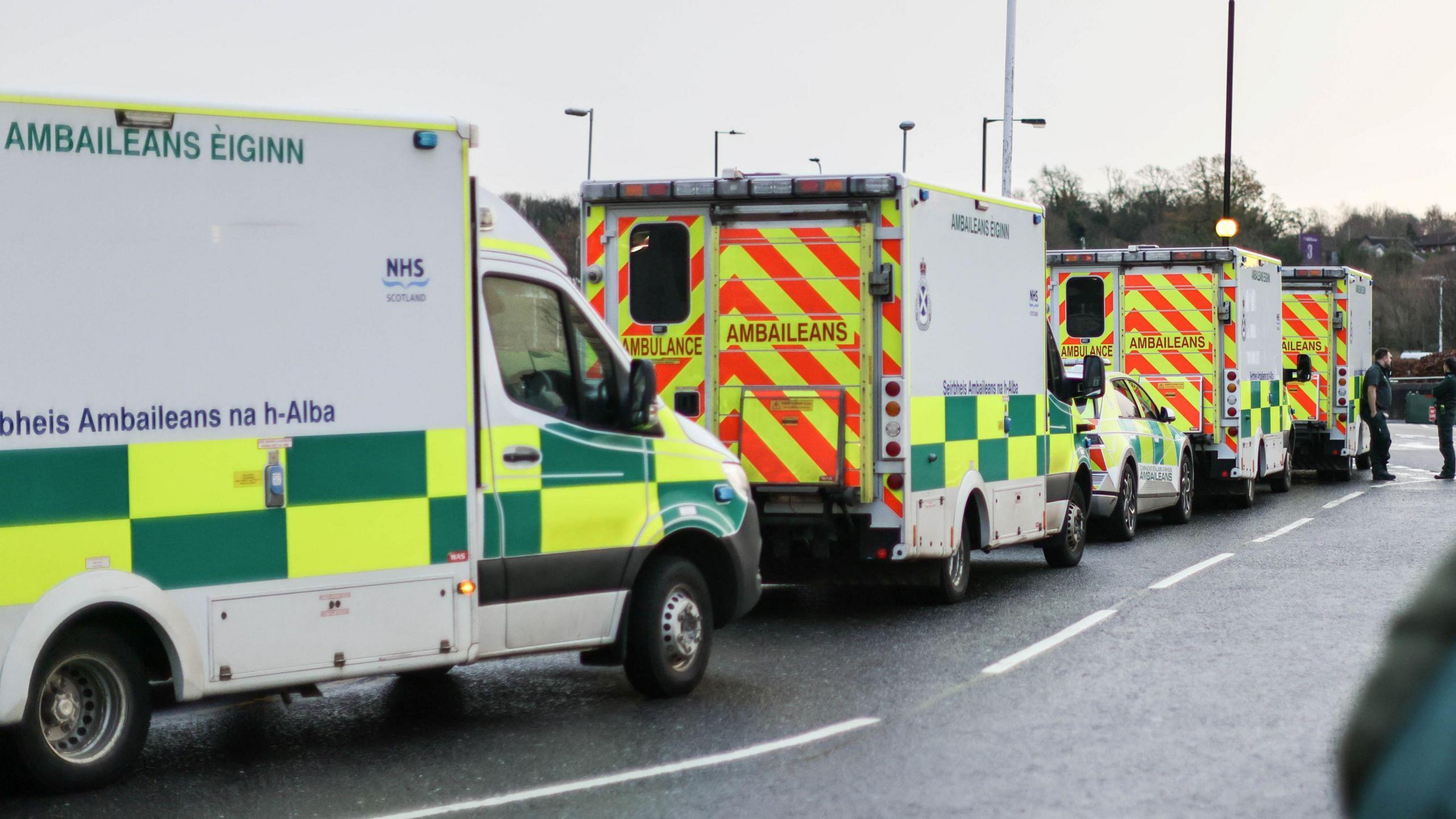
At the start of this month, the average time it took an ambulance to drop a patient at a Scottish hospital was just over an hour.
One way to alleviate the pressure is to cut the number of people taken to A&E in an ambulance.
The Scottish Ambulance Service (SAS) says almost half of 999 calls don’t actually require a patient to be rushed to hospital.
As a result, each SAS control centre now has a clinical hub team – made up of GPs, clinical advisers, nurses and advanced paramedics - whose job it is to assess calls that are categorised as not immediately life-threatening.
They offer phone and online medical help or can tap into community resources such as Hospital at Home, GPs or pharmacies, or they can help direct patients to appropriate hospital care.
The SAS says in the last year more than 50,000 unnecessary ambulance journeys have been saved.
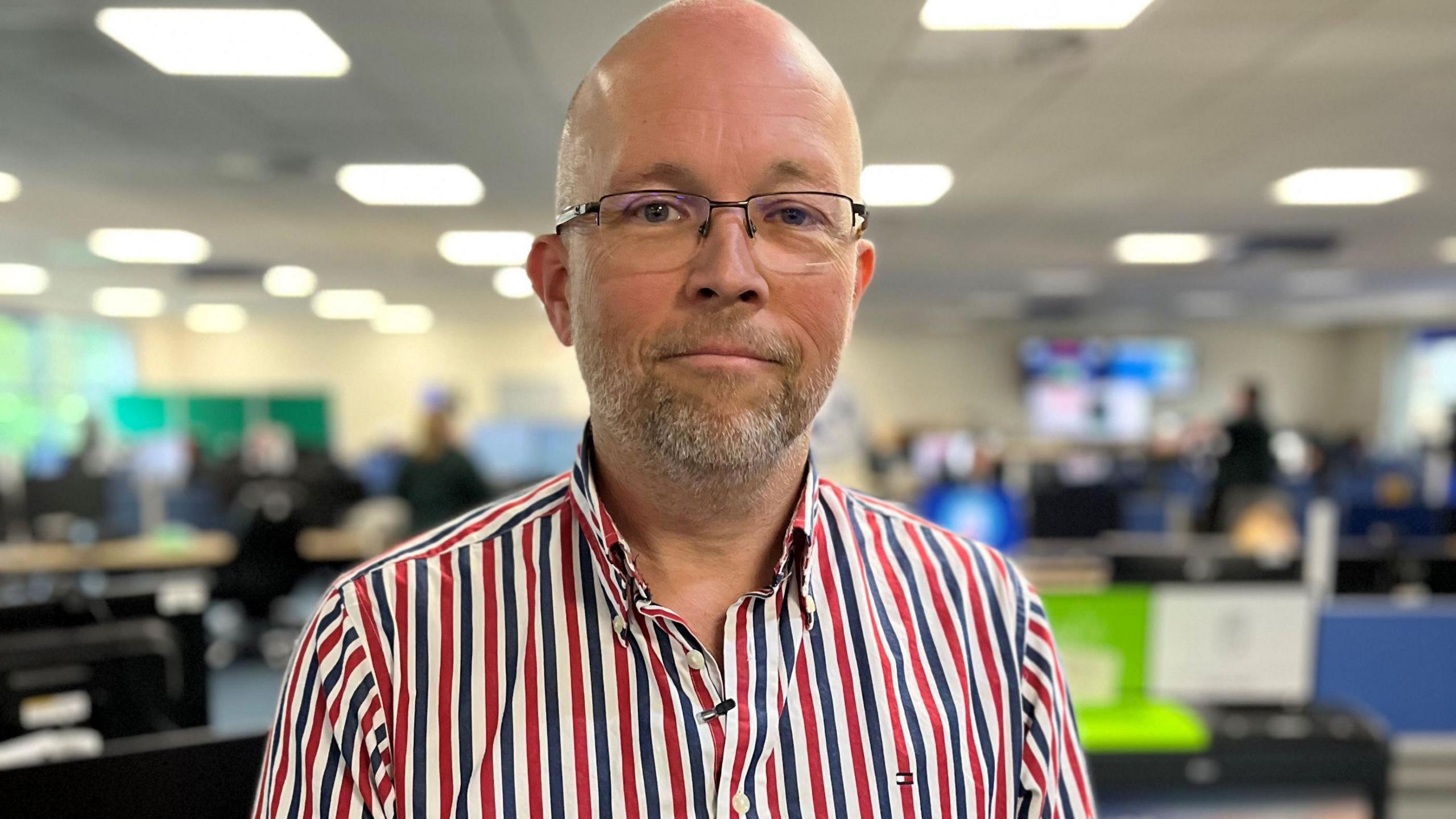
Dr Gareth Evans believes early triage can save patients a lot of unnecessary journeys
Dr Gareth Evans is the SAS' associate medical director.
He believes early preliminary assessment can save patients "a lot of unnecessary effort and a lot of unnecessary journeys".
Dr Evans added: "Most patients know what they need but they sometimes struggle to access the care that they need, and they find themselves in the wrong bit of the system.
"So we will often find ourselves managing patients that could be managed elsewhere."
He says patients might be managed in the pharmacy where they can get the drugs they need or by out-of-hours GP services or they might be able to take themselves to hospital.
In June, more than a third of calls dealt with by the clinical hub didn’t require an ambulance response.
SAS say that avoided about 4,200 ambulance dispatches.
Dr Evans says hospitals and GPs are working hard but there is a lot of demand on the NHS.
"There's a lot of illness, there's a lot of frailty, and people just want that care when they're ill when they're in that moment of need," he said.
"It's heartbreaking to see people in the back of ambulances waiting.
"We know that patients aren’t getting great care in the back of an ambulance parked outside the hospital.
"And we also know there's another patient somewhere else that needs that ambulance outside their house."
Dr Evans said ambulance crews were enormously stressed by the situation.
"The best way is to try and not take a patient hospital if they don't need to go," he says.
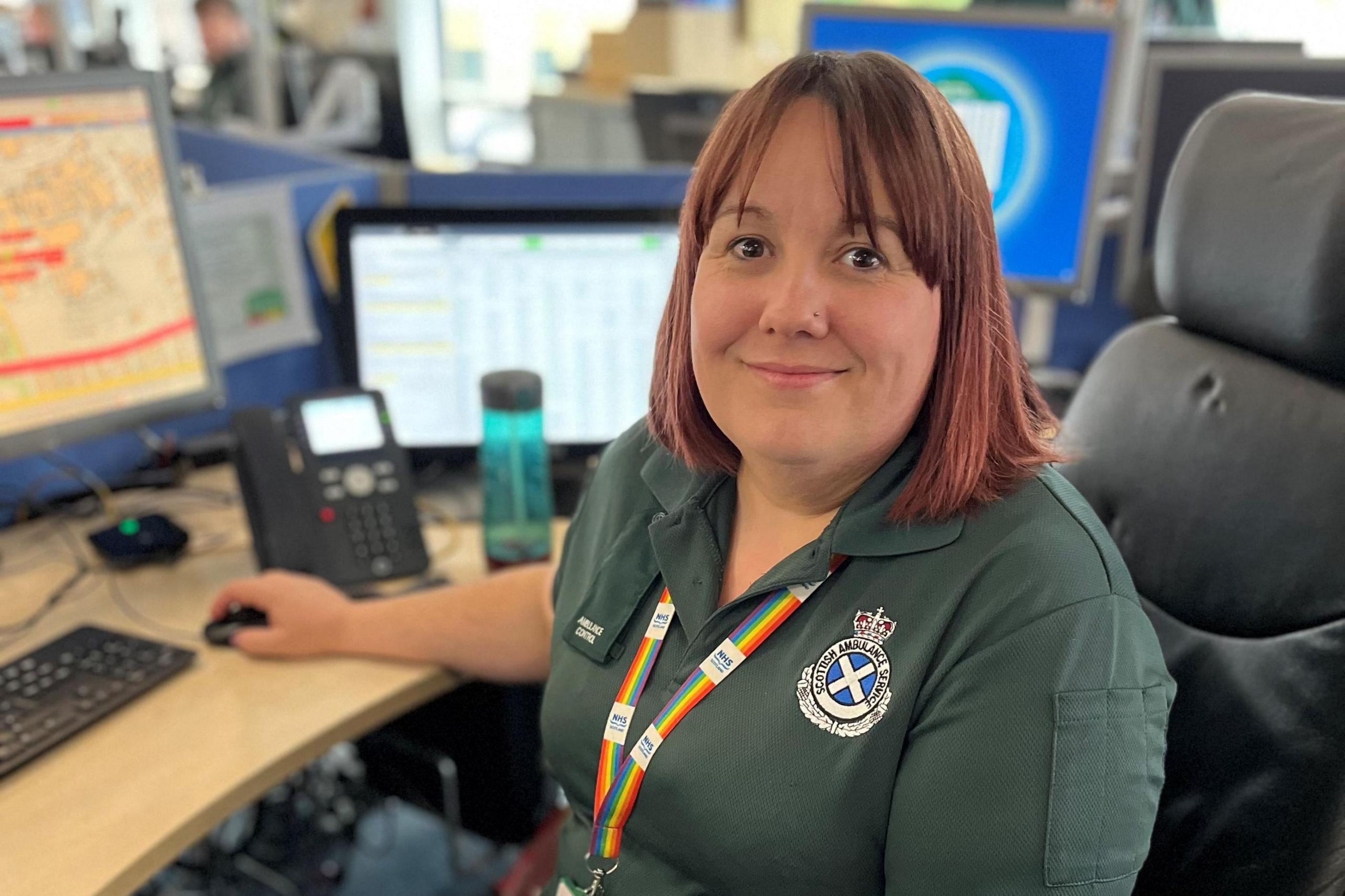
Tabbitha Haston said it’s tough to deal with calls when she can see ambulances caught up waiting to discharge patients at A&E
Tabbitha has worked in the control centre in South Queensferry for more than a decade.
She said it’s tough to deal with calls when she can see ambulances caught up waiting to discharge patients at A&E departments.
“For patients it means we're delayed getting to them," she says.
"We've got no resources to send when they phone because crews are sitting with our last patient waiting to hand over to the hospital."
She believes the problem is down to capacity issues across the NHS and she has seen demand on the ambulance service grow "exponentially".
"I can remember when I started, being a call-taker on a night shift and at midnight being the only call-taker in Edinburgh.
"The demand now has increased so much."
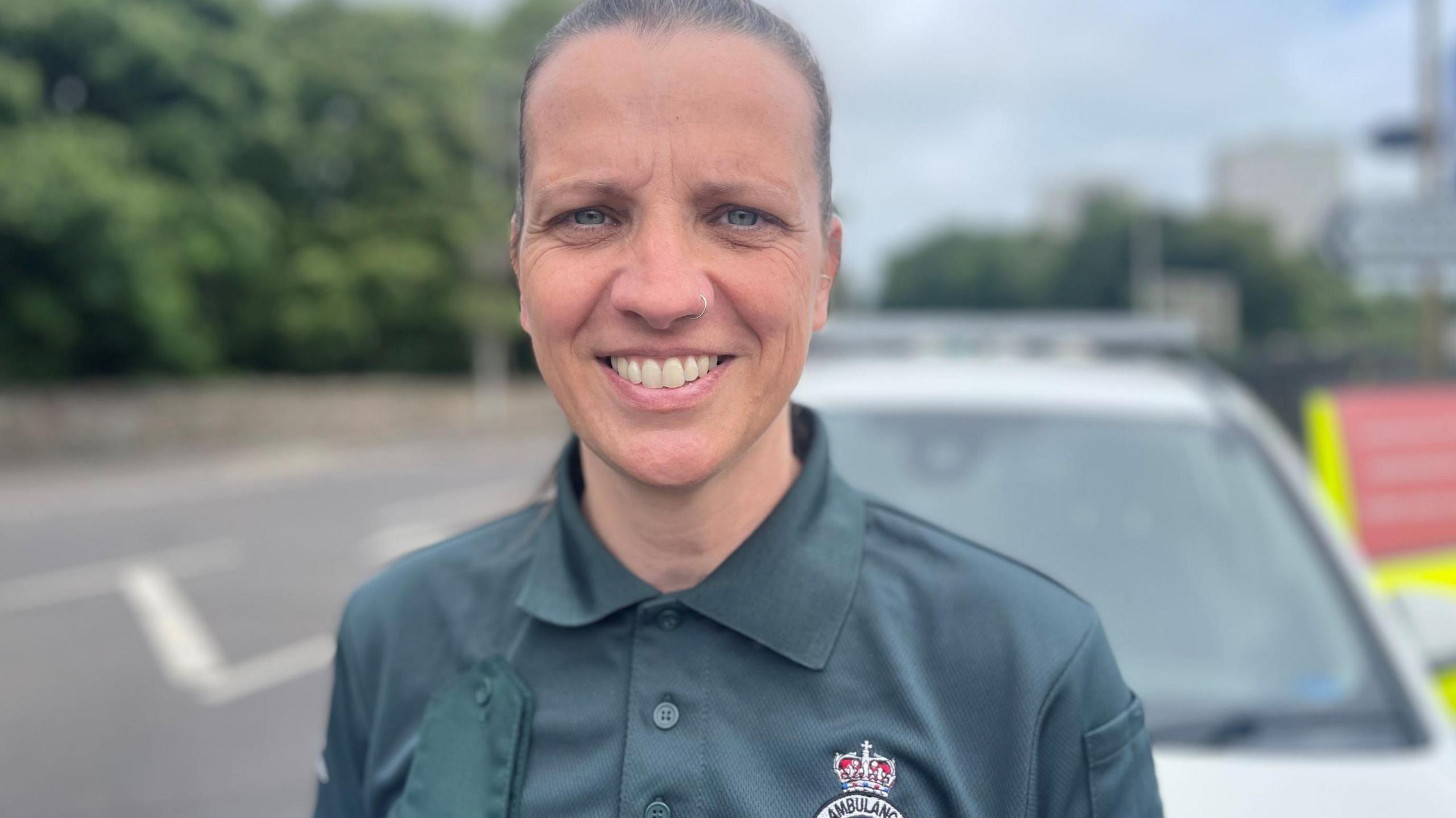
Danni Pagliarulo says people need the right care no matter the pressures on the NHS
Paramedic Danni Pagliarulo responds first-hand to emergency calls across Edinburgh.
She works closely with hospitals and social care teams to work out the best treatment routes for the patients she sees.
"We try to put patients on pathways where they will receive the right care," she says.
"Whether that may be another route to hospital, we have direct access with oncology, palliative and end-of-life care and we have community pathways like Hospital at Home.
"There’s social care, mental health services, drug and alcohol services in place for patients.
"We’re all adapting. Healthcare is ever changing and the ambulance service has to adapt with that.
"Regardless of the pressures and demands we are under or the hospitals are under it should be the norm. It’s about getting the right care."